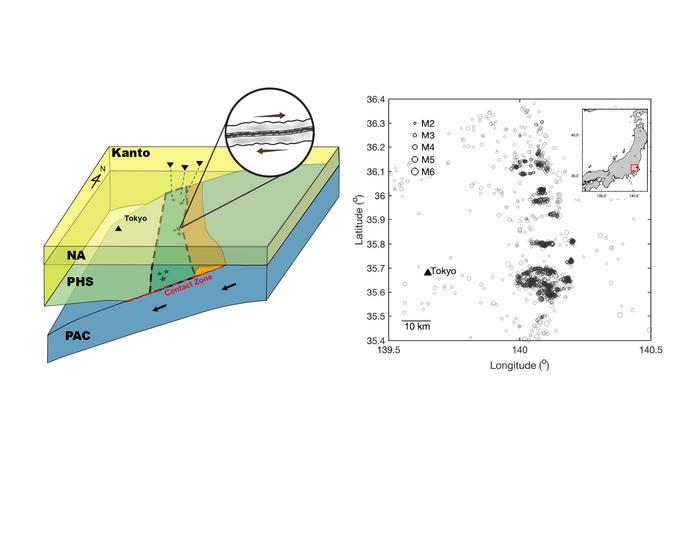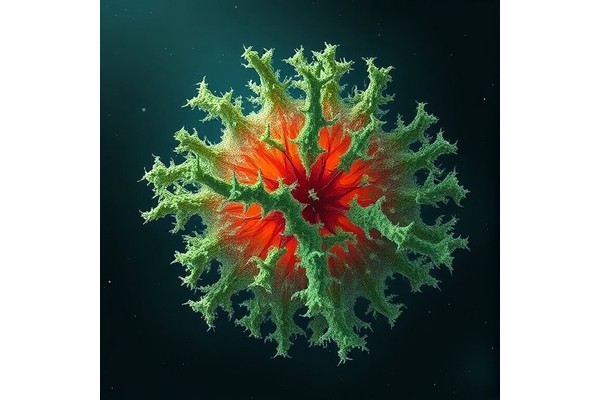Fault Zone Rock Properties Play a Key Role in Earthquake Generation
Fault Zone Rock Properties Play a Key Role in Earthquake Generation

In a groundbreaking study conducted by researchers at the University of Michigan, significant insights have emerged regarding the interplay of geological forces that drive earthquakes. This research addresses the long-standing question of what precisely triggers seismic activities along fault lines, specifically within subduction zones where tectonic plates collide and one plate is forced under another. While fault stress has long been considered the main actor in this geological drama, the study reaffirms that the characteristics of the rocks within fault zones are equally important contributors to the occurrence of earthquakes.
Located beneath the eastern Kanto region of Japan, including the city of Tokyo, the study’s focal area experiences a unique geological setting. Here, the Philippine Sea Plate converges with the North American and Pacific Plates, leading to a complex interaction that generates numerous earthquakes. Notably, the research highlights that earthquakes in this region are often smaller and occur at significant depths—between 60 and 70 kilometers, thus supporting the view that subduction-related earthquakes can exhibit varied characteristics based on both temporal and spatial factors.
Under the guidance of Yihe Huang, an associate professor of earth and environmental sciences, the research team meticulously analyzed the geological structures of this region. They discovered that the rock material along the fault lines is notably foliated. This means that within the rocks, minerals are organized into distinct layers, suggesting a level of structural complexity that has profound implications for seismic activity. The findings are published in the prestigious science journal Science Advances and challenge previous notions about the uniformity of fault zone compositions.
Huang’s research illustrates that the foliation of rocks not only alters their physical properties but also plays a critical role in determining how these rocks respond to stress. Specifically, the study highlights the essential concept of anisotropy in geologic materials, where the mechanical properties of rocks can differ substantially depending on the direction of applied stress. This phenomenon raises significant questions about the assumptions made regarding earthquake triggers and promotes a more nuanced understanding of their underlying mechanisms.
An important consequence of the findings is the emphasis on identifying and understanding why certain locations within a subduction zone are more prone to earthquakes than others. Huang points out that while broad patterns of seismic activity within subduction zones have been traditionally studied, the current research underlines the necessity of examining local conditions. This detailed approach could yield valuable insights that may help in developing better predictive models for earthquake occurrences and improve the effectiveness of early warning systems.
Moreover, the ability to discern active regions of subduction zones and their relationship to earthquake generation represents a crucial step towards enhancing public safety, especially in populated urban areas such as Tokyo. Understanding these localized patterns of seismic activity could offer new strategies in earthquake preparedness and risk mitigation. By identifying areas that may contribute to larger seismic events, researchers can better inform policymakers and urban planners about where to focus resources and infrastructure adaptations.
A key methodological component of the study involved utilizing borehole seismometer stations deployed strategically throughout the Kanto region. These instruments, placed approximately every 25 kilometers, are specially designed to detect minor seismic signals, providing researchers with a wealth of data regarding the subterranean geological structures. The seismometers penetrate about 100 meters into the ground, giving them access to deeper geologic layers that may influence seismic behaviors.
Additionally, the researchers assessed the underlying rock’s Poisson’s ratio, a measure that captures a material’s elastic properties in three dimensions. By analyzing data akin to observing a sponge’s deformation under various stress applications, the study was able to deduce a relationship between tectonic shifts and the rocks’ capacity to absorb or dissipate energy. The results indicated an unusual strength profile in the geological materials, revealing that when these rocks are subjected to lateral stress, they display minimal deformation in the perpendicular direction.
This discovery prompted Huang and her team to hypothesize that the observed geological anomalies are indicative of exceptionally localized structural variances in the fault zone. Such insights illuminate the complexity of rock formations in these regions, advocating for a deeper understanding of the interplay between structural geology and tectonic mechanics.
Following these findings, the researchers intend to expand their investigative efforts seaward, focusing on data from seismometers positioned directly on the ocean floor, aiming to delve deeper into the geological layers of the Japan subduction zone. This future research holds the potential to refine our understanding of seismic hazards associated with deep interplate earthquakes, offering further perspective on how the intricate behaviors of tectonic plates and fault zone materials might interact.
In summary, the study emphasizes that the intricacies of plate tectonics and fault zone heterogeneity are essential to understanding the mechanics of seismic activity. By shining a light on the structural characteristics of rocks along fault lines, it opens up new avenues for earthquake research and response strategies. This work underlines the pressing need for a re-evaluation of earthquake predictions and the factors that contribute to seismic risks, particularly within densely populated areas that lie within the shadows of subduction zones.
As the field of seismology continues to advance in understanding the profound yet complex influences at play in earthquake dynamics, the hope is to use this knowledge to ultimately safeguard communities and reduce the catastrophic impacts of these powerful natural phenomena.
Subject of Research: The relationship between fault zone rock properties and earthquake generation in subduction zones.
Article Title: Fault material heterogeneity controls deep interplate earthquakes.
News Publication Date: 26-Feb-2025.
Web References: Science Advances
References: Not applicable.
Image Credits: Credit: Yihe Huang, University of Michigan.
Keywords: Fault zones, subduction zones, earthquakes, anisotropic properties, tectonic plates, geological structures, borehole seismometers, earthquake prediction, seismic activity, rock properties, Japan, earth sciences.
Educators Voice Serious Worries Over Impact of Online Misogyny on Student Development
Next PostExciting Discovery: Fossil Eggshells from Utah’s Cedar Mountain Formation Reveal Cretaceous Eggs of Feathered Dinosaurs, Herbivores, and a Rare Crocodile-Like Species Outside Europe
High Latitude Changes Precede Palaeocene-Eocene Thermal Maximum







